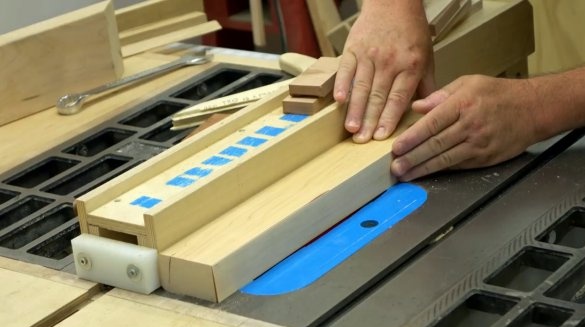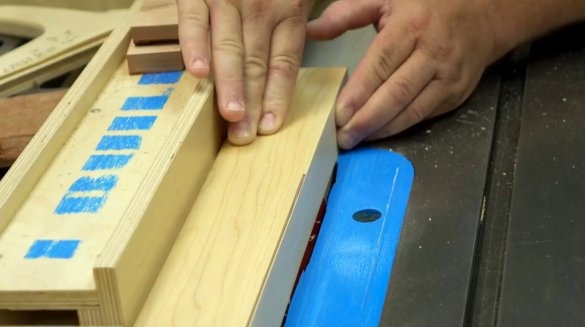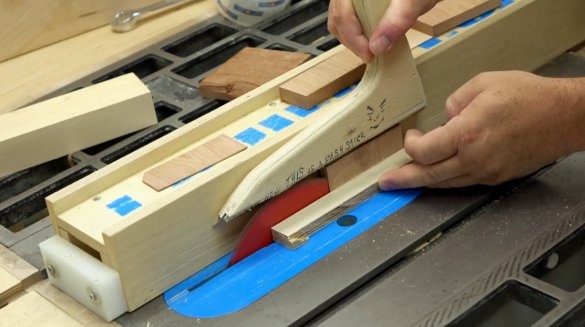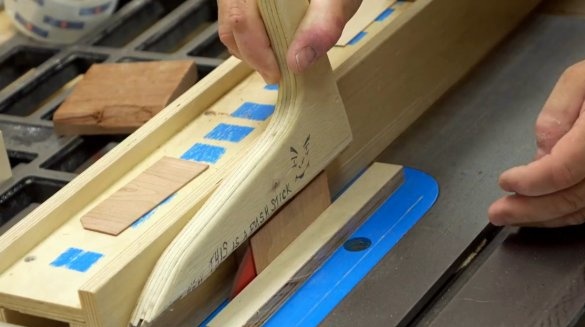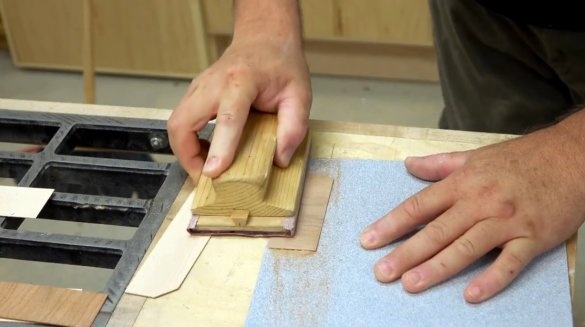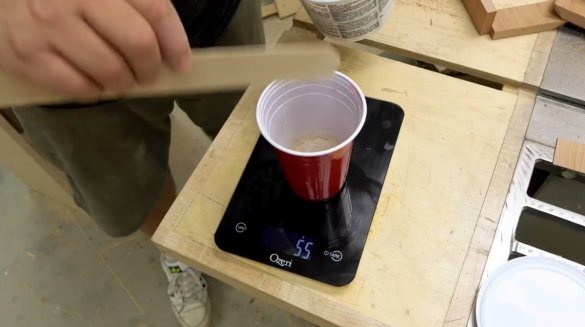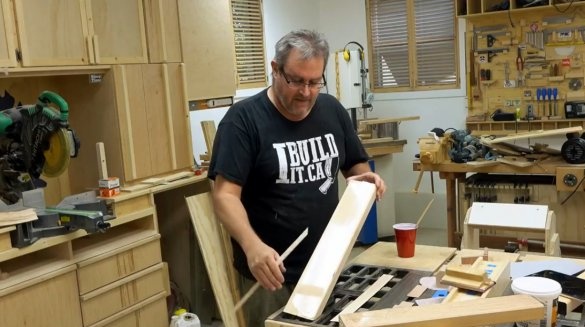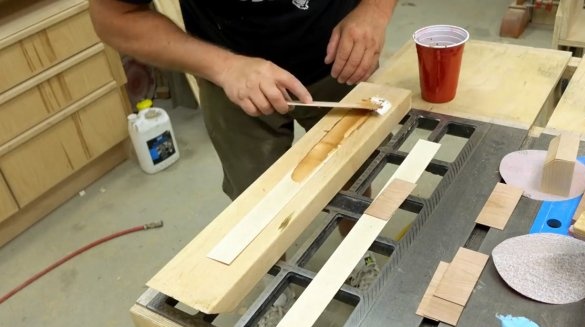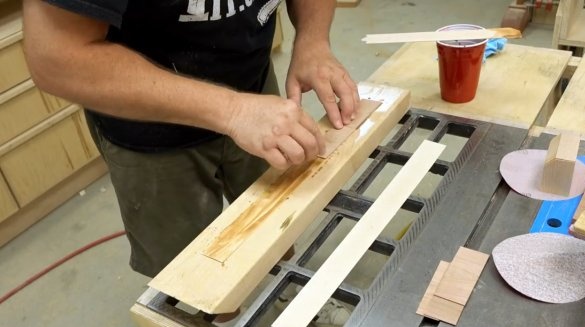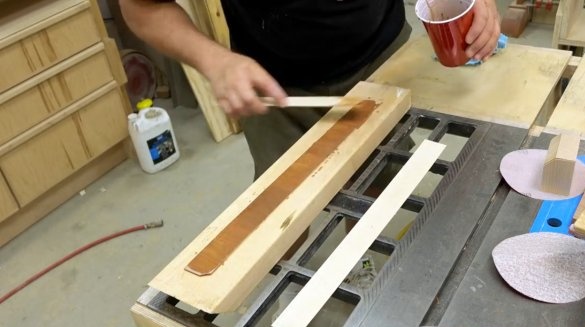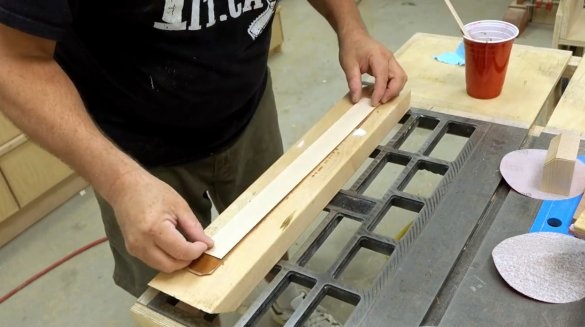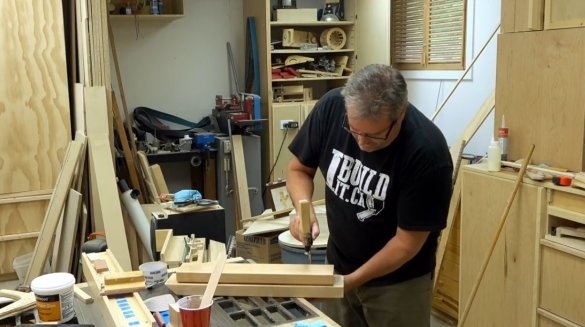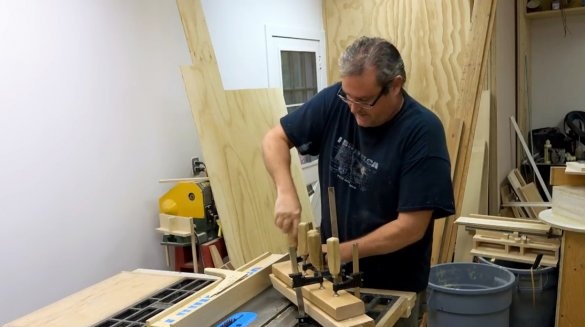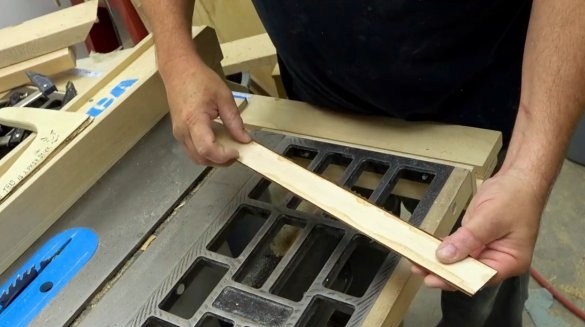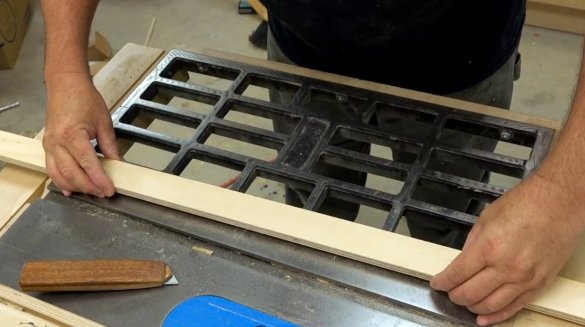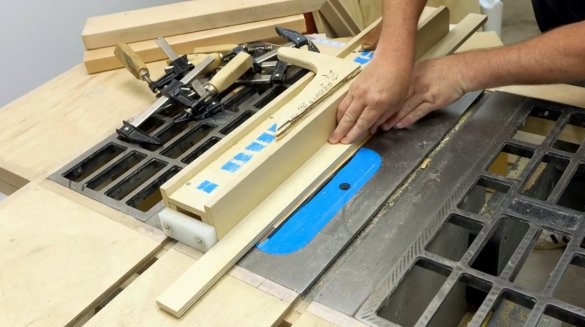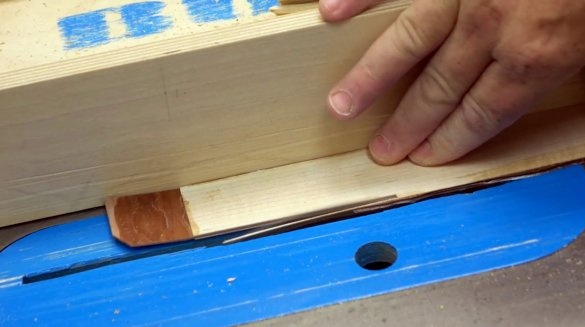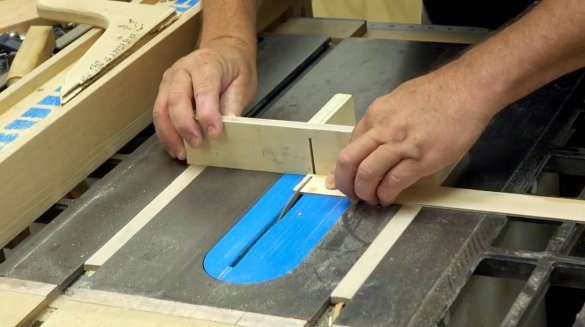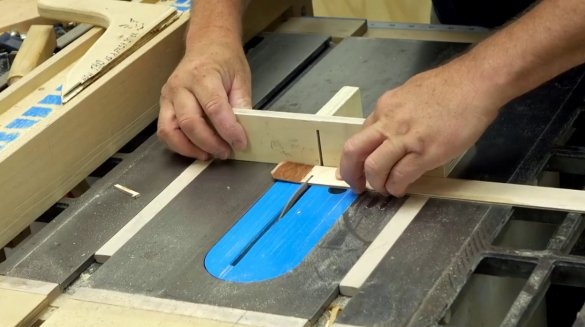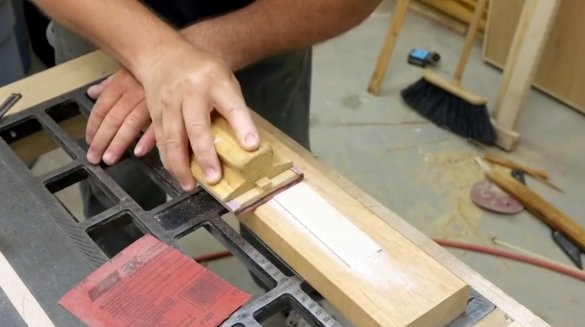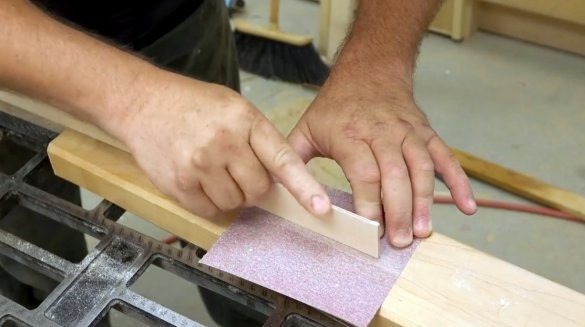Almost every one of you used such a versatile material as plywood in the manufacture of various home-made products. However, it is not always possible to procure plywood from the required type of wood, or suitable thickness.
In this article, YouTube author Woodwooding Tips and Tricks tells you how tohome conditions, you can make thin high-quality plywood, however, in small volumes.
This technique will allow you to get plywood from any, even valuable species of wood.
Materials
- Cherry and maple boards
- Sandpaper
- Synthetic glue
- Packing tape
- Double-sided tape.
Instruments, used by the author.
— A circular sawpusher
— Electronic caliper
- Sandpaper holder
- Libra
— Clamps.
Manufacturing process.
For the outer layers of plywood, maple wood will serve. Whereas the inner layer will be cherry wood.
On a circular saw, John cuts thin maple plates.
Plywood can have any number of layers — three, five, seven — but their number is always odd. The author will be limited to three layers.
Ideally, the outer layers should be carved from wood of the same grade and thickness. The inner layer may be from another species of wood, but sawn necessarily across the fibers. This technique helps stabilize the wood, preventing it from expanding and contracting too much. In addition, transverse fibers significantly increase the strength of plywood.
These are followed by cursory measurements of the thickness with a caliper. For the cherry layer, the author proceeded from a thickness of 4, and for the maple - 2 mm. These samples showed some minor deviations that would not affect the quality of the plywood.
But this strip was much thicker from one edge. Using the grinding block, the author corrects the situation. The thickness of the outer layers should be the same everywhere, otherwise the surface of the plywood will not be smooth, and it will turn out wavy.
Layers of plywood will be glued with synthetic glue. 21 ml of water are poured into a separate container based on the required concentration of glue. 35 g of powder is added to the water, so that the total mass of the mixture becomes 56 g. The components are thoroughly mixed with a spatula.
The reason why the author uses this particular glue is the slow crystallization of the glue. So the author does not have to rush in the process of processing the layers. In addition, this glue is much stronger than wood glue, which is initially strong, and eventually becomes very brittle.
The author selects even bars, puts a strip of packaging tape on it, and on top - the first layer of maple, carefully lubricates it with glue (preferably done with a brush).
Next, the master lays out segments of the next, inner layer on the surface of the first layer, and again a maple wood layer goes on top of it.
When all layers are glued and connected, they are pressed down from above by the same even wooden beam and tightly tightened with clamps.
In this position, the product should lie down for several days. Even after this time, the wood may turn out to be somewhat damp, since, being pressed on both sides by bars, is poorly ventilated by air. It is best if drying takes place in a warm, dry room.
The master removes the clamps, a strip of plywood does not stick to the base. The packing tape worked. The surface of the plywood is flat, without tubercles.
It remains only to align the edges. It was decided to do this on a circular saw (the glue is very hard and hardly possible for a planer). With pieces of double-sided tape, the master glues the product to a wooden board.
It puts emphasis on the width of the plywood strip, and cuts off the edges.
It remains to lightly sand the surfaces and ribs of the product.
By the same technology it is possible to make plywood of large sizes - it will be high-quality plywood!
Instead of a circular saw, it is better to use a band saw, its blade is 3-4 times thinner than a saw blade, and it is possible to cut a wooden veneer of a much wider width. After it will have to grind the veneer surface.
I thank the author for the easy way to make plywood yourself!
If you have interesting homemade products, share them on this site. Here you will get a real reward, not a “bunch of green stuff" at the entertainment forum.
All good mood, good luck, and interesting ideas!
Author video can be found here.



